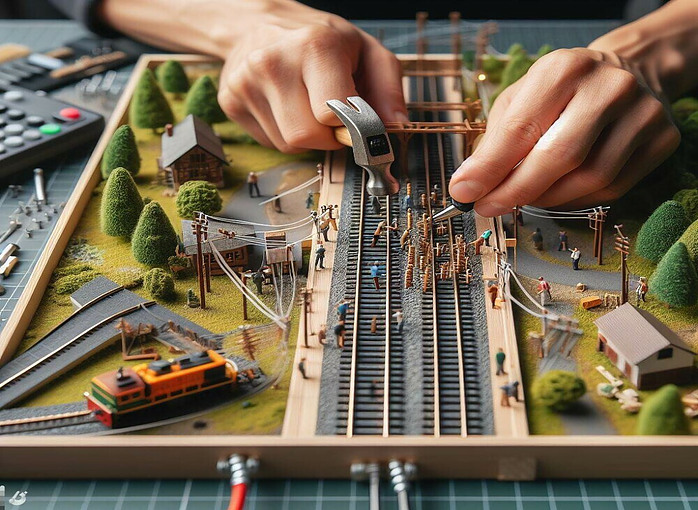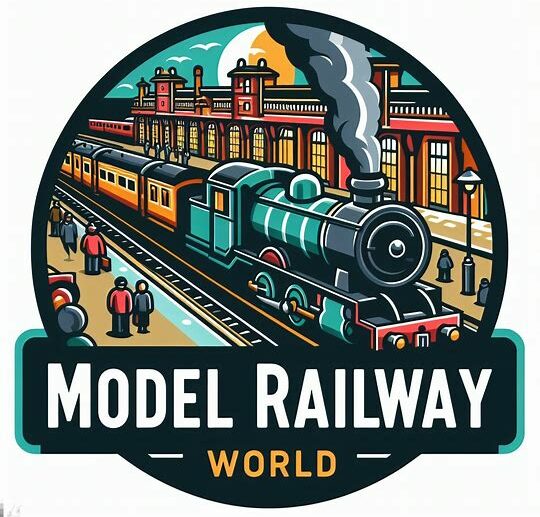You might be thinking about diving into the world of model railways, or you could be looking to perfect your current setup. Either way, knowing how to lay model railway track is where the magic begins. It’s not just a functional part of your model railway; it’s the stage on which your miniature world comes to life, with trains weaving their way around meticulously crafted landscapes. Trust me, a well-laid track makes a world of difference.
Model railways aren’t just a pastime; it’s a passion shared by millions around the globe, combining creativity, engineering, and a touch of nostalgia. The tracks are the backbone of your model, and getting them right is crucial. They are more than just pieces of metal or plastic; they represent the roads to miniature towns and the paths through scaled-down mountains.
Planning Your Layout: The Foundational Step
I’m going to guide you through the critical stage of planning your model railway layout. That’s going to include discussing scale, theme, and drawing out your plan, which sets the stage for the actual track laying process.
Choosing the scale of your model railway is the starting point. This essentially means deciding how your models compare to the real thing in size. You’ve got options ranging from the tiny Z scale to the sizable G scale. The more popular gauge is ‘OO’ if you are based in the UK, ‘HO’ if you are based in the US, and more recently Hornby TT120 . Choose something that resonates with you and fits your available space.
Your theme is your story. Do you want a bustling city landscape or a tranquil countryside? Historical accuracy or a fantasy world? Your theme will dictate the types of buildings, scenery, and even the trains you’ll run.
Sketching a layout plan isn’t just about getting your ideas down on paper; it’s about logistical planning. Think track spacing, turn radii, and station placement. Ensure there’s enough space for all the elements of your theme, including landscapes and architectural models.
You’re going to find out about choosing materials for your baseboard in the next section, but here’s a teaser: you want sturdy, yet lightweight. Remember, you may need to move it, so don’t choose something that requires a forklift.
Taking the time now to plan thoughtfully is going to save you headaches down the road. It’s like setting up dominos; line them up carefully, and you’ll have a smooth run once you start laying track.
Step-by-Step Guide to Laying Your Track
I’m here to help you through one of the most satisfying parts of building your model railway: laying down the track. First, let’s talk about how to secure the baseboard and get that surface ready. A stable, flat base is crucial, so ensure your baseboard is on a firm frame and that the surface is even. Use cork sheeting or foam underlay for sound-dampening and to mimic natural earth beneath the tracks.

You’re going to find out about the differences between sectional and flex track. Sectional track pieces come pre-formed in various shapes and sizes, making them easy to assemble but less flexible for custom layouts. Flex track, on the other hand, allows you the freedom to create smooth, continuous curves and can be cut to any length.
Next, we’ll look at techniques for fixing the track. Choose something that resonates with you: you can either nail, screw, or glue your track to the baseboard. Always remember to leave a little ‘breathing room’ for the tracks to expand and contract with temperature changes. Ballasting, which involves placing fine gravel around the tracks, not only adds realism but also provides additional stability.
Wiring basics for track electrification aren’t as daunting as they might sound. In my opinion, it’s best to start simple. Connect your power supply to the tracks ensuring polarity is consistent, and test each section for connectivity before fully securing the tracks.
Testing the track for smooth operation is your final step here. Run a locomotive around to check for any rough spots or misalignments. Making adjustments now means fewer disruptions when it’s all systems go.
Maintenance and Troubleshooting: Keeping Your Railway in Prime Condition
You’ve meticulously planned your layout, laid each piece of track with care, and delighted in the smooth operation of your model railway. However, the journey doesn’t end there. Maintenance is key to long-term enjoyment and optimal performance. Regular cleanings, for instance, are essential to prevent dirt and debris from causing disruptions.
Just don’t focus too much on perfection; issues will arise, and that’s just part of the hobby. From electrical shorts to derailments, you’re going to find out about common problems that most enthusiasts encounter. I’m here to help you with simple troubleshooting techniques to get your trains running smoothly again.
You can always adjust your approach down the road, and the same goes for your model railway track. As you gain experience or your ambitions grow, upgrading your track and expanding your layout might be on the cards. With each addition, you’ll not only improve your setup but also your skill set.
Remember, there’s a lot of opportunity in every challenge you face with your model railway. Each repair, modification, or expansion improves the authenticity and operation of your miniature world. Ultimately, it’s the trials and the triumphs that make this hobby so rewarding.
I really hope that your model railway track laying experience is as smooth as the locomotives that will grace it. And if you ever hit a snag, just remember that you’re part of a community that loves to lend a hand. Roll up your sleeves, grab your conductor’s hat, and let the adventure continue!

Model railways truly encapsulate a beautiful fusion of artistry and technicality. The way a track is laid sets the stage for an entire miniature universe to unfold.
Have you considered a particular era or theme for your model railway?
There are so many options, from modern cityscapes to nostalgic countryside scenes.
When it comes to track layouts, do you prefer intricate designs with multiple loops and junctions, or do you lean towards simpler, more focused routes that highlight specific elements of your miniature world?